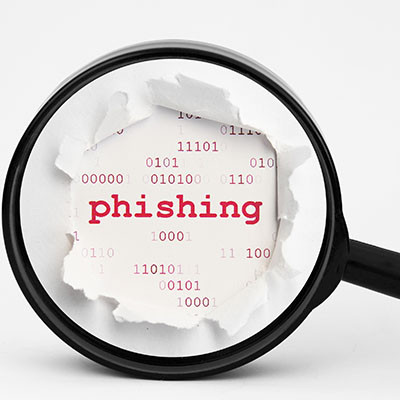Direct Technology Group Blog
How to Identify and Avoid Phishing Tactics
One of the most dangerous types of threats is the many phishing scams you and your employees could fall victim to. While it might be tempting to poke fun at the people who succumb to seemingly obvious phishing attacks, the reality of the matter is that some phishing attacks are anything but, and they are only growing more sophisticated over time.
Let’s discuss why phishing attacks are hackers’ preferred attack of choice, how you can identify them, and how you can take steps to prevent phishing attacks from becoming a problem in the first place.
Why Phishing Attacks Are So Effective
Hackers will often try to impersonate banks, governments, or other known organizations in an attempt to get the user to act a certain way. Phishing attacks work because they target human psychology rather than brute force their way through powerful security systems. It’s a lot easier to get someone to click on a link or give up sensitive information than to crack military-grade encryption, for example. People might respond to a phishing attack for several reasons, whether due to a sense of urgency, a fear of retaliation, a curiosity about the unknown, or simple misdirection.
Identify Red Flags
To help combat phishing attacks, you first need to be able to identify them. The first throwaway sign is that the message is suspicious, whether it’s a text message, a phone call, a voicemail, an email, or a social media message. The phishing message might be urging you to take some sort of action, often with aggressive or threatening language. They might try to urge you into action through some sort of fear tactics related to law enforcement or financial ruin. Be wary of downloading any unsolicited attachments, and be on the lookout for messages that use broken English or poor grammar to communicate their desires. If it looks fake, then it probably is, and even if it looks real, treat it with skepticism and try to contact the individual through an official contact method on record with your business.
Implement Proactive Measures
If you’re worried about phishing attacks (and you really should be), you can take measures to make them less dangerous. These are mostly preventative and proactive in nature. For one, you can implement a robust spam filter to prevent dangerous messages from reaching your email inboxes. Additionally, you can implement multi-factor authentication on the off chance someone on your staff accidentally hands over credentials to a hacker. Perhaps the best thing you can do, though, is to simply train your employees on how to identify phishing attempts. Tell them about the warning signs and encourage them to practice scrutiny whenever possible.
Take the Fight to Phishing Attacks Today
You don’t have to live in fear of phishing attacks, but you don’t want to live without a healthy dose of skepticism and vigilance, either. Thankfully, you can make phishing attacks much less scary by working with Direct Technology Group. Our trained and trusted technicians can protect your network from threats and offer training for your employees to help them identify potential phishing attempts before they make a mistake. Learn more by calling us today at (954) 739-4700.



Comments